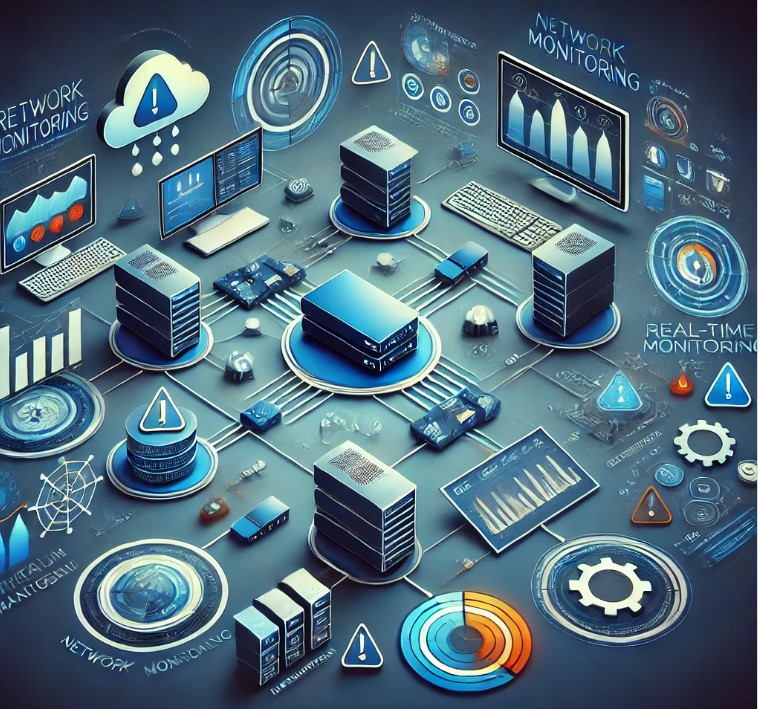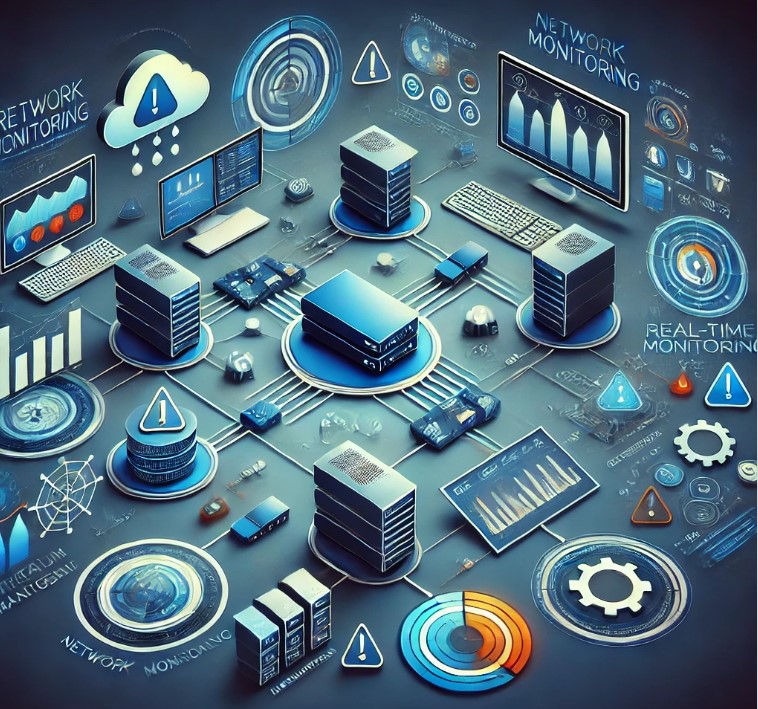In today’s hyper-connected business environment, your network and servers are the foundation of your operations. From storing sensitive data to facilitating communication, these systems are critical to the smooth functioning of your business. Yet, many organizations overlook the importance of monitoring network and server activity, leaving themselves vulnerable to security threats, performance issues, and costly downtime. Here’s why regular monitoring is essential:
1. Enhancing Network Security
One of the most critical reasons to monitor network and server activity is to protect your organization from cyberattacks. In 2023 alone, cybercrime is expected to cost the world over $10.5 trillion annually by 2025. With hackers becoming more sophisticated, an undetected breach could result in compromised customer data, intellectual property theft, or even operational paralysis.
By actively monitoring network traffic, you can spot unusual activity—like unauthorized access or abnormal data transfers—before it escalates into a full-blown security breach. Real-time alerts can notify your IT team of any suspicious behavior, enabling them to take immediate action.
2. Preventing Network Downtime
Server and network downtime can be devastating for any business. Whether caused by hardware failure, overloads, or software glitches, downtime not only results in lost revenue but also damages your reputation. A 2022 survey by Gartner found that the average cost of IT downtime is $5,600 per minute (Source). That’s a figure most businesses simply cannot afford.
Monitoring your server and network health ensures that potential issues—such as CPU overuse, memory leaks, or bandwidth bottlenecks—are detected early. This allows you to proactively address problems before they result in downtime, keeping your systems operational and your business running smoothly.
3. Optimizing Performance
Regular monitoring helps to optimize system performance by giving you insights into how your network and servers are being utilized. With a clear understanding of resource usage, IT teams can make informed decisions about capacity planning, load balancing, and infrastructure upgrades.
For example, if you notice your network’s bandwidth is consistently being maxed out, you may need to upgrade your infrastructure to ensure smooth operations during peak hours. Similarly, monitoring server performance can help you allocate resources more efficiently, improving the speed and reliability of applications and services.
4. Compliance and Auditing
Many industries are subject to regulatory requirements that mandate the monitoring and logging of network and server activity. For example, healthcare organizations need to comply with HIPAA, while financial institutions must adhere to regulations like PCI-DSS. Failing to monitor network activity could result in non-compliance, hefty fines, and legal ramifications.
Regular monitoring helps organizations meet compliance requirements by providing a detailed audit trail of user activity, data transfers, and security protocols. These logs can be invaluable during audits, helping to demonstrate that your organization takes data protection and security seriously.
5. Proactive Issue Resolution
Network and server issues don’t usually appear out of nowhere. More often than not, there are warning signs that something is about to go wrong—such as performance degradation, increasing error rates, or failing hardware. Monitoring tools allow your IT team to detect these signs early and address them before they escalate into critical issues.
Proactive issue resolution not only prevents downtime but also saves your organization money by avoiding the need for emergency repairs or unplanned replacements. With continuous monitoring, your team is equipped to handle small problems before they become big ones.
6. Improving User Experience
In many cases, the first indication that there’s a problem with your network or servers comes from your users. Whether it’s slow loading times, lost connections, or poor performance, these issues can severely impact user experience. By monitoring network and server activity, IT teams can identify and resolve issues before they affect end-users.
A seamless user experience is crucial for maintaining customer satisfaction and employee productivity. With real-time monitoring, your organization can deliver a smooth, uninterrupted digital experience, reducing frustration and increasing trust.
Conclusion
Monitoring your network and server activity is no longer optional—it’s essential. From protecting your business from security threats to ensuring peak performance and compliance, regular monitoring provides peace of mind and enables your IT team to operate proactively rather than reactively. With the right monitoring tools in place, you can safeguard your systems, improve efficiency, and avoid costly downtime. Are you monitoring your network and servers effectively?
Contact us today to learn more about implementing a robust monitoring strategy tailored to your business needs.

